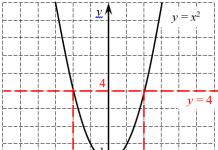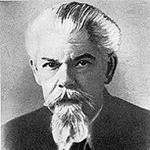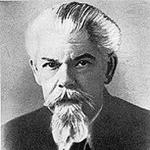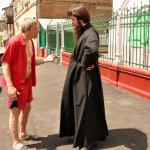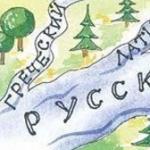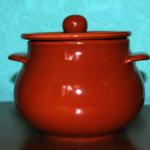The device of the board for playing backgammon, checkers and dice
Long backgammon, according to the rules of the game, is played on a board consisting of 24 points (holes). The board is conditionally divided into two equal parts by a special board (bar), with six holes for checkers on each short side.
Fig 1. Initial arrangement of checkers in board game long backgammon
According to the rules of the game of long backgammon, each player has 15 checkers of the same color. Initially, all black checkers are placed in hole number 1 (see Fig. 1), and white checkers are placed in hole 13. Holes 1 and 13 are called respectively - black's head and white's head. The goal of the game of long backgammon is to bring all the checkers to your home before the opponent and remove them from the board before the second player does. Black's home is points numbered 19 to 24 (see Fig. 1), white's home is holes numbered 7 to 12.
Start of the game long backgammon
The game of long backgammon begins with the successive throwing of the dice. Dice or dice are thrown in such a way that they both fall in one half of the game board and lie firmly on the edge. If the cubes are scattered on both halves of the board, if at least one of them falls off the board, or at least one stands obliquely, leaning against the board or checker, then the throw is repeated.
The right of the first move in long backgammon is played as follows: the players throw one die each, the player who threw large quantity points and will go first. In case of equality of points dropped out, a second attempt is made. If, after the end of the first game, the second game is played, then the player who won the first game starts it.
At the beginning game is coming seizing advantageous positions. From the head, for the move, you can remove only one checker(except for the first move 3:3, 4:4 and 6:6). It is better to use every move to capture profitable positions that secure future moves. In case of falling out during the first move of combinations 3:3, 4:4 and 6:6, two checkers must be removed from the head, because. You won’t be able to make the whole move alone - the enemy’s head will interfere.
The purpose of the game of long backgammon
In the game of long backgammon, the player must pass all the checkers a full circle (counterclockwise), enter the house with them and throw them away before the opponent does. The home for each player is considered to be the last quarter of the playing field, starting from a cell separated from the head by 18 cells.
The movement of checkers in the board game long backgammon
In the backgammon board game, the player rolls two dice at the same time. After the throw, the player moves any of his checkers by a number of cells equal to the rolled number of one of the cubes, and then any one checker - by a number of squares equal to the rolled number of the other cube. That is, if "three" fell on one die, and "five" on the other, then, accordingly, you can move one of your checkers by three cells, and the other by five cells. In this case, you can move one checker eight cells. It doesn't matter which move to make first, whether it's a larger number or a smaller one. In this case, only one checker can be taken from the head.
The first roll in the backgammon board game provides players with an exception to the above rule. If one checker, which can only be removed from the head, does not pass, then the second one can be removed. There are only three such throws for the player: six-six, four-four, three-three. In this situation, in the board game long backgammon, play with one checker full speed there is no possibility, since the opponent's checkers standing on the head interfere. If one of these combinations falls out, then the player can remove two checkers from his head.
In the board game long backgammon, you cannot move two checkers by the number of cells indicated by one die, and then by the number of cells indicated by another die. That is, if five or four fell out, you can’t go first with one checker for two, then the other for three (that is, win back five with two checkers) and then win back the four in the same way. If both dice have the same number of points (double, jackpot), then the number of points is doubled, i.e. the player plays as if he rolled 4 dice and can make 4 moves per the number of cells rolled on one die.
In the board game long backgammon, it is allowed to put an arbitrary number of checkers on one field. A checker cannot be placed on a cell occupied by an opponent's checker. If a checker lands on an occupied cell, it is said that it "does not go". If the opponent's checkers occupy six squares in front of any checker, then it is locked. In the board game long backgammon, it is not forbidden to build blocks of 6 checkers, however, all fifteen checkers of the opponent cannot be locked. There is a variant of the rules: You have the right to build a fence of six checkers only if at least one checker of the opponent entered the house.

Fig 2. In long backgammon, the move by "run" is not considered a mistake, because. it is done during the player's turn and does not interfere with his opponent
In the board game long backgammon, if a player cannot make a single move for the number of points that he rolled on the dice (the checkers "do not go"), then the player's dropped points disappear, and the checkers do not move at all. If a player has the opportunity to make a full move, he does not have the right to shorten it, even if it is in his interest. That is, if it is more profitable for the player to make "three", and "six" fell out and there is an opportunity to go "six", then "six" should go. In long backgammon, if such a stone fell out that allows the player to make only one move, and any of the two, then the player must choose the larger one. The smaller points are gone. Note: the term "stone" in backgammon can refer to a dice, as well as a combination of points that fell on two dice. For example, a stone "four-three".
Throwing checkers in the board game long backgammon

Fig 3. Black rolled 4:2. They throw two checkers
In the board game long backgammon, the term to throw away checkers means to make moves so that the checker is off the board. Conventionally, tips for dropping checkers can be divided into 3 parts: capturing positions in the fourth quarter, correct input checkers into the ejection zone and the actual ejection of checkers. A player can only start discarding checkers when all of his checkers have arrived at home. In the process of removing the checkers from the house, the player has the right to use the points that fell on the dice at his own discretion: he can play the checker in the house or throw it away. Checkers can only be thrown from the fields corresponding to the dropped points on the dice. For example, if the roll is 6:3, the player can remove one checker from the 6th field and one checker from the 3rd field from the board. In the board game, long backgammon in the process of removing checkers from own house it is allowed to display checkers from the fields of the lowest level, if there are no checkers in the fields of the highest level. For example, if 6:5 fell on the dice, and there are no checkers on fields 6 and 5, then the player can withdraw two checkers from the house from the next in order, the fourth field, if there are no checkers there, then from the third, if there are none - from the second, etc.
Results in the board game long backgammon
There is no draw in the game of long backgammon. If one player has thrown away all his checkers, the second player is considered a loser, even if the next throw may also throw away all his checkers. The game of long backgammon is over.
Building and breaking "fences"
"Fence" - these are the checkers of one of the players lined up in a row. If you managed to build a fence of 6 or more chips, then this is already a blank fence because it is impossible to jump over it.
Deficit of moves
At any moment of the game, we have access to different amount moves for each of the 6 digits of the die. There are times when, with a double 6:6, we have access, let's say only two moves and not four (for example, during the first move), and there is a loss of moves. Effective use The "deficiency of moves" of one's own and the opponent's is one of the most difficult in long backgammon and is a sign of the highest skill.
Classic, or long, backgammon is quite complex, but very exciting and interesting game for two players. Of course, this fun is not available for kids, but older children enjoy playing it with their parents or peers. In this article, we bring to your attention the rules for playing long backgammon for beginners, with the help of which even children can understand the intricacies of this entertainment.
How to play long backgammon - basic rules
In the game of long backgammon, 2 players always take part, each of which has 15 chips of the same color. To organize this game, a special board is required, divided into 2 halves by a protruding bar called a bar, and having 24 holes, or points.
Initially, both players place all their chips at the exit from the point located on the right side of the playing field. In the future, all the checkers move counterclockwise on the board.

The task of each player is to move their chips through the entire field as quickly as possible, place them in the house, and then remove them from the board. At the same time, “home” means 6 holes located on the opposite side from the point of initial placement of checkers. So, in the picture above, White's house is marked with numbers from 19 to 24, and Black's - from 7 to 12.
Before the start of the game, both participants must roll the dice to determine who has the most points. It is this player who gets the first move. In the future, the bones are thrown out in order to find out by how many points the walker must move his checkers. At the same time, the movement of chips in the game of classic, or long, backgammon must obey the following rules:

Of course, it is not very easy to understand the rules of long backgammon. However, with a little practice, even a child can easily understand what to do in a given situation in order to achieve victory faster.
The backgammon board is similar to a chess board, only the action takes place with inside, and not from the outside, as in chess. The field is divided into 24 holes, 12 on each side of the field. Used 30 checkers, 15 pieces each different color each of the two players has two zaras. Zara - ordinary dice (cubes).
Placement of chips, start and goal
Backgammon is long. Each player places all his checkers in the first hole in the upper right corner of the board. The right side of it is called the white yard, the left side is the black yard. The player whose zar shows the most points on the roll goes first. The winner starts the second game. The goal of the game is to move all your checkers counterclockwise to the last quarter of the board, "home" (if for your own checkers, consider the one where they stand first) and then discard them. Both dice are rolled to make a move. If at least one of them fell on the edge of the board or flew out of it, the throw is repeated. The number of points dropped determines the number of holes to which one or two chips can be moved (which ones, the player decides).
Movement of checkers in long backgammon
On the first move, one checker is moved by the number of holes that the dice will show. At a time, only one chip can be taken from the “head” (the hole in which they are placed at the beginning). An exception is made if the dice rolled the same number(“Kush”, four moves are allowed), then you can remove two chips. For example, if “twos” fell out, there are such options:
Remove one chip from the “head” and go four times with two holes;
Remove two, and go with both two times two;
Remove two, one - one move for two divisions, the second three moves for two divisions.
When all the checkers are on the field, with "jackpots" they go four times, with what chips and how, you decide for yourself. It is forbidden to put a checker in the hole where someone else's is already standing, you can put it on your "head". If, for example, the “jackpots” of the six fell out on the first move, the only option is to remove two checkers and rearrange them in the seventh hole, the next move falls on the “head” of other people's chips.
The player needs not only to move his chips to the last field as quickly as possible, but also to prevent the opponent from moving, occupying as many holes as possible. Then the enemy will lose moves and he will have fewer options movement. If after the throw there is nowhere to go due to the fact that all possible divisions for the move are occupied by other people's checkers, they skip the con. It is impossible to refuse a move, even if it is not profitable.

Throwing chips, game over
You can start throwing checkers only when all of them are in the “house”. They are discarded according to the number of points dropped: 6 and 4 fell out, checkers are removed from the sixth and fourth from the end of the field, holes. If there are no chips in the nests whose number has fallen out, a move is made to this number (dropped out 1 and 2, when everyone is on the sixth hole - a move is made by 1 and 2 divisions; 6 and 5 when everyone is already on the first field - two are simply thrown out ).
There are no draws, the one who first discards all the checkers wins. Your throw!
In the section on the question How many chips are in the backgammon game? It is very necessary to find out: how many chips are in backgammon? given by the author NK the best answer is Backgammon.
Inventory.
Backgammon board
*. The playing field (board) has rectangular shape. There are 24 points on the board - 12 from each of the two opposite sides. The point is usually a narrow elongated isosceles triangle, the base of which lies on the side, and the height can reach half the height of the board. The points are numbered from 1 to 24. The numbering is different for each player. For convenience, items can be colored in two colors - even in one, odd in another.
*. Six points in a row in one of the corners of the board are called the player's home. The location of the house depends on the rules.
*. From the sides of the board, areas intended for placing checkers over the board can be allocated. If they are not provided for in the design of the board, the players put the checkers on the table to the side of the board (next to the house).
*. The board splits in the middle vertical stripe called a bar. In those versions of backgammon where you can beat the opponent's checkers, the knocked down checkers are put on the bar.
*. Each player has a set of checkers - 15 pieces of the same color (in some versions of the game fewer checkers are used).
*. There is at least one pair dice(zar). The set can contain two pairs of bones - each player has his own, as well as special cups for mixing the bones. In the bet game, the so-called “doubling cube” can also be used, an additional cube for the convenience of taking into account the increase in rates - the numbers 2, 4, 8, 16, 32, 64 are marked on its faces.
Many have heard about backgammon, but they think that this game is difficult or long, even if they have never played it. This game is full of symbols - 12 cells - months, 30 chips - days / nights, and on the bones the sum of the opposing sides is equal to the number of days in a week.
Modern rules appeared in 1743 in Britain. How many chips in backgammon - depends on the game, their number can change both up and down. It is not difficult to play backgammon (players from 6 years old), she simple rules, one tour lasts approximately 10-20 minutes. Another interesting thing is that the game depends on the random value of the dice, so you do not need to calculate each move like in chess.
Short backgammon or long backgammon?
There are two main types - short and long backgammon. Short ones require more high level the skill of the player, so tournaments are held mainly for this type of game. They are called short not by how many chips there are in backgammon, but because of their dynamism and fascination. Despite their great similarity, these games have a number of differences that change the gameplay.
What they have in common is that they are designed for two players, each is given 15 one-color chips, they are placed in the house - their corner of the playing field.
One of the main differences is the arrangement of chips and the ability to play broken checkers. During the game, the chips go through the entire playing field (in short backgammon, moves are made in opposite directions, in long backgammon - in one, counterclockwise direction). Having bypassed the circle, the chips return to the house and are taken out of the field. Whoever does it first is the winner.
The playing field, dice and chips are the same when playing any backgammon. How many chips should be depends not only on whether backgammon is long or short, but also on a variation of any of these games. Usually they are from 5 to 15 for each player.

In you can knock out blots - cells with one enemy chip.
In long backgammon, the chips are usually off the board and one by one are entered onto the playing field. It is forbidden to put 6 chips in a row, you can not occupy a field in which there is already an opponent's chip, there is no way to knock out chips.
In short backgammon, the numbering of cells is individual for each player. The final quarter of the playing field (where there are 5 chips at the beginning) is called the home. The farthest is the 24th cell, it is also the 1st point for the enemy. The arrangement of 15 chips is as follows: 2 checkers on the 24th cell, 5 - on the 13th, 3 - on the 8th and 5 - on the 6th.
In long backgammon, the house is the last quarter of the field, 18 cells from the head.
Game progress
Before starting the game, how many backgammon chips the players have chosen, such a number are placed along their wall along the entire length. Then they, depending on the values that fell on the die, move around the field. You can move with one or two chips. If a double fell on the dice, then the move is repeated with the same or other chips for the same number of moves.
To choose the order, they roll a die (also called a bone or a dice). The first person to make a move is the one with the most great importance. This also determines the initial location of the chips. If the values are the same, then repeated throws are made until the appearance different results. The player, starting the game, moves the chips by a number of moves equal to the rolled values of both dice.
Further, in short backgammon, players take turns throwing two dice and moving their chips from cells with higher numbers to smaller ones (clockwise). Chips of the same color can stand one above the other, this is called "on the head". In one move, you can take only one chip from your head, unless a double has fallen on the dice. You cannot bet on your opponent's chips. If there is no valid move, it is skipped.
Game strategies
It doesn't matter how many chips are in backgammon, the winnings are very dependent on the random values of the rolled dice. But there are, except by chance, some game strategies that build its course so that the opponent is forced to skip his moves. Therefore, it is recommended not to collect the chips compactly, but to distribute them as much as possible over the surface. And although according to the rules you cannot put 6 chips in a row, you can put 5, thereby making it difficult for the opponent. If there is no strategic move, you need to try to take one chip from your head per turn, otherwise the enemy will quickly get to 1 sector with several of his chips and block your exits.


